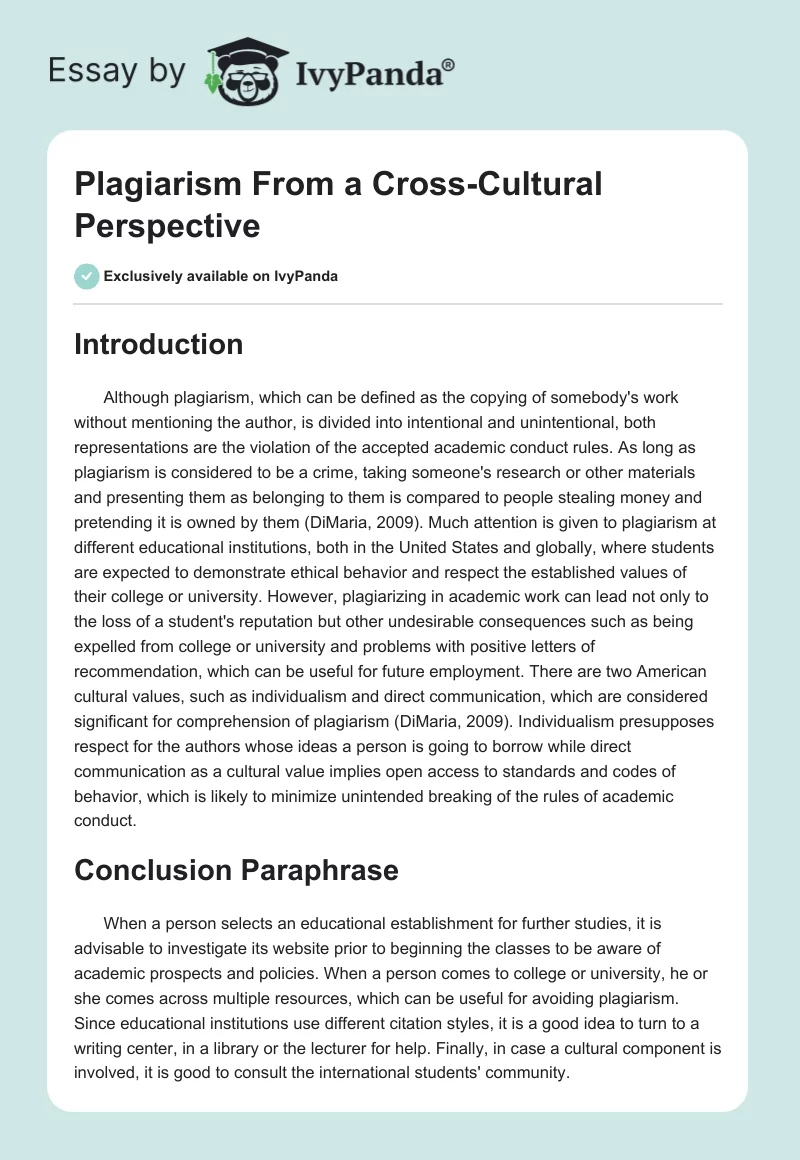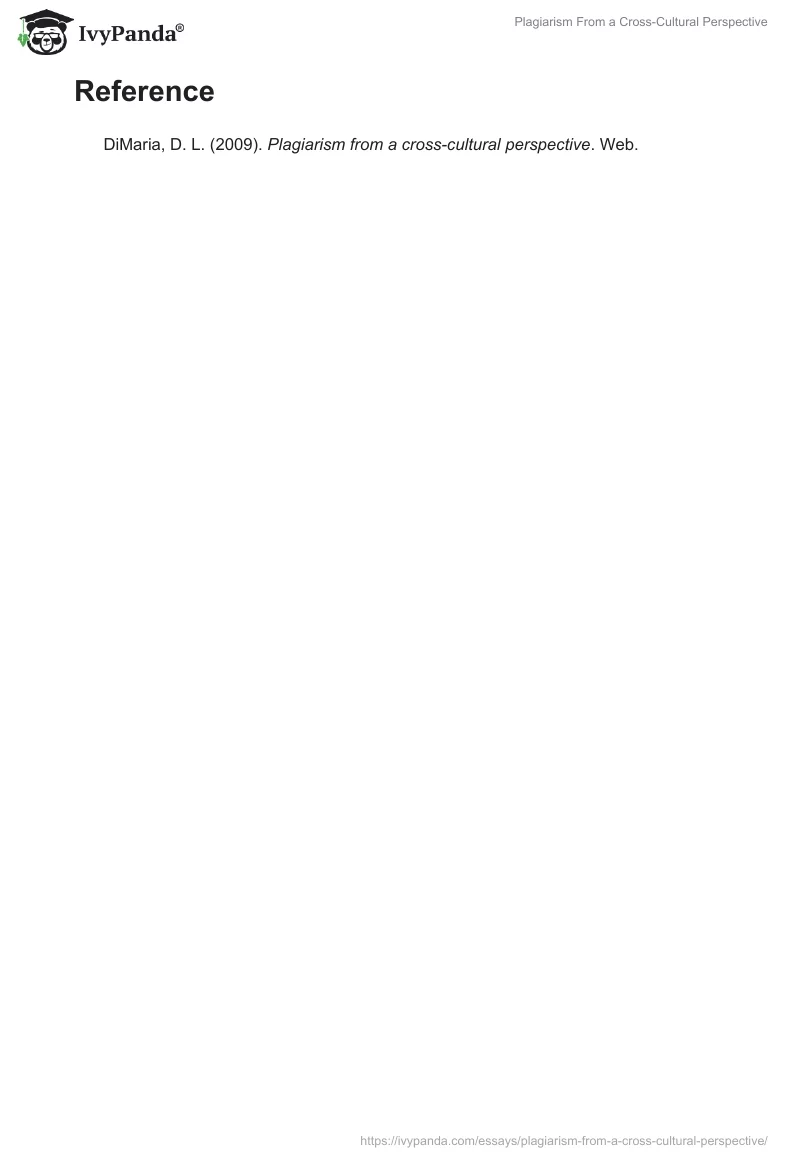Introduction
Although plagiarism, which can be defined as the copying of somebody’s work without mentioning the author, is divided into intentional and unintentional, both representations are the violation of the accepted academic conduct rules. As long as plagiarism is considered to be a crime, taking someone’s research or other materials and presenting them as belonging to them is compared to people stealing money and pretending it is owned by them (DiMaria, 2009). Much attention is given to plagiarism at different educational institutions, both in the United States and globally, where students are expected to demonstrate ethical behavior and respect the established values of their college or university. However, plagiarizing in academic work can lead not only to the loss of a student’s reputation but other undesirable consequences such as being expelled from college or university and problems with positive letters of recommendation, which can be useful for future employment. There are two American cultural values, such as individualism and direct communication, which are considered significant for comprehension of plagiarism (DiMaria, 2009). Individualism presupposes respect for the authors whose ideas a person is going to borrow while direct communication as a cultural value implies open access to standards and codes of behavior, which is likely to minimize unintended breaking of the rules of academic conduct.
Conclusion Paraphrase
When a person selects an educational establishment for further studies, it is advisable to investigate its website prior to beginning the classes to be aware of academic prospects and policies. When a person comes to college or university, he or she comes across multiple resources, which can be useful for avoiding plagiarism. Since educational institutions use different citation styles, it is a good idea to turn to a writing center, in a library or the lecturer for help. Finally, in case a cultural component is involved, it is good to consult the international students’ community.
Reference
DiMaria, D. L. (2009). Plagiarism from a cross-cultural perspective. Web.


